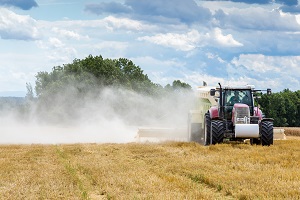
While the world is attempting to address major environmental problems of our times, such as climate change, biodiversity loss and deforestation, nitrogen pollution remains a major unresolved challenge, but has, so far, received very little attention from decision-makers. Everyone knows about climate change and carbon footprints, but few people are aware of nitrogen pollution, the nitrogen cycle and the impacts of its imbalance.
Over the past 100 years, humans have massively altered flows of nitrogen on our planet, leading to both benefits for food production and multiple threats to our health and the environment. The use of fertilizers and manure for agriculture and the use of combustion engines in transport, all lead to significant nitrogen emissions to air and releases to water and land. The dire consequences: Air, soil and water pollution that damages human health, threatens biodiversity of forests and rivers, and leads to coastal and marine pollution that exacerbates the effects of climate change. The problem is indeed not a small one: in some European countries, over 40 per cent of air pollution-related mortality can be attributed to emissions of nitrogen compounds from agriculture.
Globally, two thirds of nitrogen pollution come from agriculture. While nitrogen is an important nutrient and needed to grow crops, less and less of the nitrogen poured onto fields is being incorporated into crops; more than half is washing from fields into rivers. From 1961 to today, the nitrogen-use efficiency (NUE) of the world’s farmers has dropped from more than 50 percent to about 42 percent. Earth system scientists say that the world’s planetary boundaries for interference with the nitrogen cycle have already been surpassed. This puts the world at risk of irreversible and abrupt environmental change.
Some scientists say that if we do not halve the amount of nitrogen we dump into the environment by mid-century, our ecosystems will face epidemics of toxic tides, lifeless rivers, and dead oceans.
To raise awareness of the issue, nitrogen pollution was discussed during a virtual curtain-raiser event (4 May 2020) to the Eighth Global Nitrogen Conference (postponed due to the COVID-19 pandemic). The triennial event brings together experts from around the world. During the event, Prof. Mark Sutton, Co-chair of the Task Force on Reactive Nitrogen under the UNECE Convention on Long-range Transboundary Air Pollution (Air Convention) discussed international policy developments on nitrogen, including the achievements of the Convention in reducing nitrogen emissions in the UNECE region through legally binding emission reduction targets. He also highlighted remaining challenges and the establishment of a new Interconvention Nitrogen Coordination Mechanism, which was proposed in the resolution on Sustainable Nitrogen Management adopted by the fourth UN Environment Assembly in 2019, emphasizing the need for coordination and joined-up efforts among existing initiatives.

